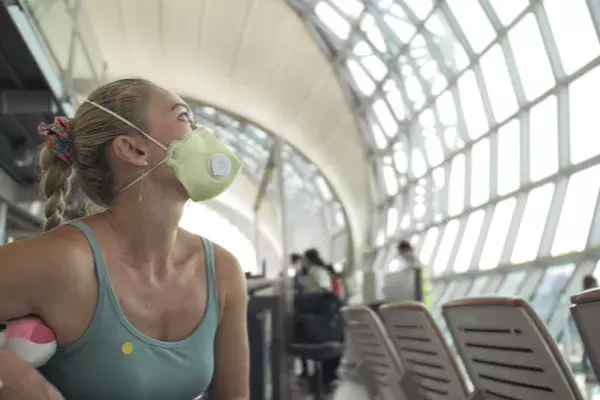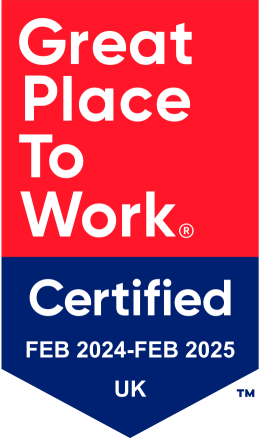19 May 2020 | Blog
An industry overhaul | Blog 2 | Tackling inconsistencies in the physical journey
19 May 2020 | Blog
An industry overhaul | Blog 2 | Tackling inconsistencies in the physical journey
We’re all busy trying to get things back up and running. But while we’re caught up in what we’re doing for our own businesses, we’re not considering the impact this lack of clarity is having on our passengers. If we don’t all work together to bring consistent, clear, and effective change across the industry, the recovery of travel is going to be much slower than necessary.
In my previous blog, I wrote about the less tangible elements that we need to work around. This includes the new customer journey that starts way before the booking even takes place, and how to lessen the anxiety and fear that is preventing our passengers from booking.
Today, my focus is on some of the physical processes with which I believe inconsistency across carriers is holding us back…
Health Certificates
We already know that a nose and throat swab is the most reliable test for COVID-19. But how far in advance can the test take place and for how long afterwards are the results valid? Health certificates could create a sense of false security and complacency with subsequent lapses of personal responsibility. This is where we need scientific consensus and clear industry guidance on the validity of these certificates. Who will issue them, and at what cost?
Testing pre-departure/post-arrival
When we saw the likes of Etihad and Emirates running health checks at check-in, this was progress and provided hope of a longer-term process. But, in its current guise, it is simply not 100% reliable, affordable, or sustainable.
The issue is that the changes that will have to be built into the process to accommodate thousands of passengers coming through departures simultaneously are challenging, to say the least.
We saw plans by Vienna Airport to offer a COVID-19 test on arrival, with results received within 2-3 hours and charged at EUR190.00 that would enable the passenger to avoid any quarantine restrictions (which IATA is calling to be lifted). Although seemingly an attractive offer, there are a couple of issues here:
- This is not affordable to everyone (think of a family travelling!) and will again make travel unviable for those on a budget.
- Who determines whether the test in Vienna is valid if someone travels onwards from there?
A lack of consistency generates a vast number of unanswered questions that will hamper the survival of the industry.
Working with industry bodies and local authorities to create a worldwide process will not only be positive for your brand image, but will also result in clear, consistent processes that encourage global travel.
Some other considerations are:
- Biometrics. We all have passports with a microchip; could the information it carries be expanded? Of course, there are privacy implications, and the policing of the process on a global scale to consider.
- A clear tracing process (by collecting personal and emergency contact data up-front, similar to what US carriers do for next of kin details) to reduce the spread of the virus.
- Government-led testing facilities at airports with encouraged – rather than mandated – testing to facilitate a lower-stress approach than mass testing requirements. This is the current volunteer approach Australia-wide if someone feels the slightest runny nose, cough, fever etc.
Hazmat PPE as uniforms
Some airlines recently started to flout designer hazmat uniforms. Don’t get me wrong - it is absolutely vital that airlines protect their crews from infection. However, subjecting your guests to such an extreme experience will likely generate more fear, and will not support the return of travel. The new protocols that IATA has outlined as necessary call for face masks and gloves to be worn by crews and masks for passengers. This is a simple yet effective approach to safe travel whilst we work out what else we can do to stop the virus.
Cleanliness is a Duty of Care, not a marketing ploy
Hotel chains and a few airlines are striving to give customers peace of mind with communications about enhanced cleaning procedures.
Cleanliness surveys will become more prominent and the worry of touching a seat buckle or using the aircraft toilet will no longer be limited to the passenger with slightly obsessive-compulsive tendencies! In fact, nearly every passenger will probably be worrying about their safety now.
The majority of Asia-Pacific carriers come top of surveys on cleanliness since the outbreak of SARS in 2002-2004. The results of these surveys have made headlines and customers will be more interested than ever as they make decisions on which company they will travel with.
Communicating to customers and managing their expectations of what the new experience with you will look like is key to promoting confidence in your brand, and travel in general.
Promise that you will take care of the cleanliness of the aircraft, and tell them how you will to do it to lessen anxiety.
Take the fear out of interactions with staff by communicating the reasons that your staff and crew wear masks and gloves.
Guide guests on what you expect of them, to make the journey easier (e.g. tell them if you will no longer provide blankets and pillows and provide guidance if they wish to bring their own.)
Offer sustainable amenity kits (hand sanitiser, biodegradable wipes, cloth face masks…)
Offer affordable, sustainable ancillaries such as blankets and pillows that are eco-friendly, stylish, and branded lightly so that people want to take them home.
The emotional hand luggage that we carry
One of the recommendations coming through our industry bodies is that we will need to minimise hand luggage on board the aircraft and that’s no bad thing, in my opinion.
Looking at a photo of my grandparents flying in the 60’s, you get a true taste of how much ‘stuff’ we now insist on dragging around with us. The advent of ancillary charges for baggage changed everything. We now have to use the power of communication to encourage passengers to embrace the “old-fashioned” way again!
In-flight entertainment
I detest having to travel with multiple devices. And a 23-hour journey seems almost impossible without at least an IFE screen for entertainment. Take away IFE screens and people will bring more devices than they actually need! Airlines with existing IFE should not be taking these off the aircraft to save weight or because guests have to use the touch-screen. This is a tool that will enable someone to stay in their seat longer, by offering a big enough screen with decent content.
The battle at the gate
The LCC luggage wars have taught us a lot of lessons. If we indeed restrict hand luggage, there will be continuous battles with staff at the gate unless we communicate effectively why we’ve made this decision. And then, we have instances of different carriers with different carryon weight allowances. Again, we need to start working together to bring the consistency that avoids unnecessary confusion.
Let’s do our staff and our passengers a favour and work out where we stand on these issues across the board now so that travellers can come back knowing exactly where they stand.
In my final blog post in this series I’ll be looking at two topics that are very close to my heart. Communication, and the environment. You can read it here.





